-

Aug
28
Washington Roundup – August 2025

Congress left for August recess after passing the “Big, Beautiful Bill”, which addressed many of the major Farm Bill funding programs. However, due to the Byrd Rule in the Senate, many programs must still be reauthorized, or face expiration at the end of September. Chairman Thompson (R-PA) has dubbed the remaining work as “Farm Bill 2.0”. He estimates that Farm Bill 2.0 should be less controversial and able to garner more bipartisan support than the Big, Beautiful Bill.
Read more
-

Aug
28
Interpretive Summary: Space-Age Tools For Old-School Grazing Management
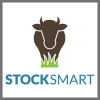
One of the oldest human-managed uses of the physical world is animal husbandry. This has always been a fascinating, complex combination of scientific understanding of natural resources and animals and the contextual application of that knowledge, which builds on itself in the doing.
Read more
-

Aug
28
Interpretive Summary: Emerging Technology for Quantifying Diet Composition of Grazing Animals
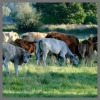
Determining what plants grazing animals are eating has been a persistent challenge for animal and rangeland scientists (Holechek et al. 1982). This challenge not only applies to important livestock species such as cattle, sheep, and horses but also wildlife – all of which often or always inhabit large extensive rangelands with complex plant communities.
Read more
-

Aug
28
Interpretive Summary: Cow Size: Implications for Grazing Rangelands and the Beef Industry
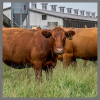
Beef cows have been getting larger over the past 4 to 5 decades which can create problems for many different segments of the beef industry (Scasta, et al. 2019). According to the United States Beef Improvement Federation and National Cattle Slaughter Summary, in 1975 the average U.S. beef cow weighed ~1,050 pounds and by 2009 weighed ~1,350 pounds, and today it is thought they weigh ~1,400 pounds but potentially stabilizing (Wiseman et al. 2018).
Read more
-

Aug
28
Interpretive Summary: Assessing the Efficacy and the Conservation Benefit of Virtual Fence on Rugged and Remote Landscapes

For producers and those outside agriculture, virtual fence provokes hope, novelty, and interest. But how does it work on rugged, mountainous terrain in remote areas?
Our recent project, Managing Rangelands with Virtual Fencing for Grazing Lands Conservation in Western Colorado, aimed to assess this question.
Read more
-

Aug
21
Interpretive Summary: Impacts of heat stress on growth performance and its mitigation in small ruminants

Small ruminants have been amongst the first farm animals to be domesticated by humans. Primarily, these animals are raised for meat, milk and skin ensuring global food security in addition to providing draught power and financial services. Small ruminants are highly valued for their versatility and excellent adaptability to varied geographical and climatic conditions as evident from their wide distribution pattern in Asian and African continents with rough climatic conditions.
Read more
-

Aug
21
Interpretive Summary: Impacts of stress on growth and reproductive development of beef heifers

The success of cow-calf operations is fundamentally tied to the performance and management of beef females, as they are expected to maintain estrous cyclicity and produce one calf per cow annually. A combination of factors, including nutrition and management practices, affect reproductive success in cattle, and therefore overall fertility and herd performance.
Read more
-

Aug
21
Interpretive Summary: Charting a course on the effects of ocean and sea transportation stress on cattle and sheep body weight changes, behavior, and nutrient mobilization

Transportation is a necessary part of ruminant livestock production, with most animals being transported at least once in their lifetime, if not more frequently. Livestock are transported for a variety of reasons, including growing and finishing, harvesting, acquiring new genetics, and show purposes. However, transportation can be a potential stressor for livestock that can impact skeletal muscle, growth, and meat quality (Dalmau et al., 2013; Deters and Hansen, 2022).
Read more
-

Aug
21
Interpretive Summary: Factors contributing to differences in stress resilience and growth performance between Bos taurus and Bos indicus cattle

As the world population is projected to increase to 9.15 billion by 2050, demand for agricultural products is expected to increase 60% (Alexandratos and Bruinsma, 2012). Current cattle production practices will not meet increasing demand. The U.S. primarily produces Bos taurus cattle and ranks first in beef exports worldwide, accounting for 20% of the world supply (Colditz and Hine, 2016; Scheffler, 2022; USDA, 2024).
Read more
-

Aug
21
Interpretive Summary: Plant tannin for grazing ruminant growth
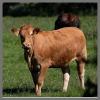
Tannins have long been used to preserve and tan leather. There are reports of tannin use dating back to the late Neolithic period (Falcão and Araujo, 2018), when aqueous extracts with plant parts were used to prevent the degradation of slaughtered animal skins, transforming them into leather.
Read more
-

Aug
20
The Giving Herd - ASAS Foundation Newsletter - August 2025
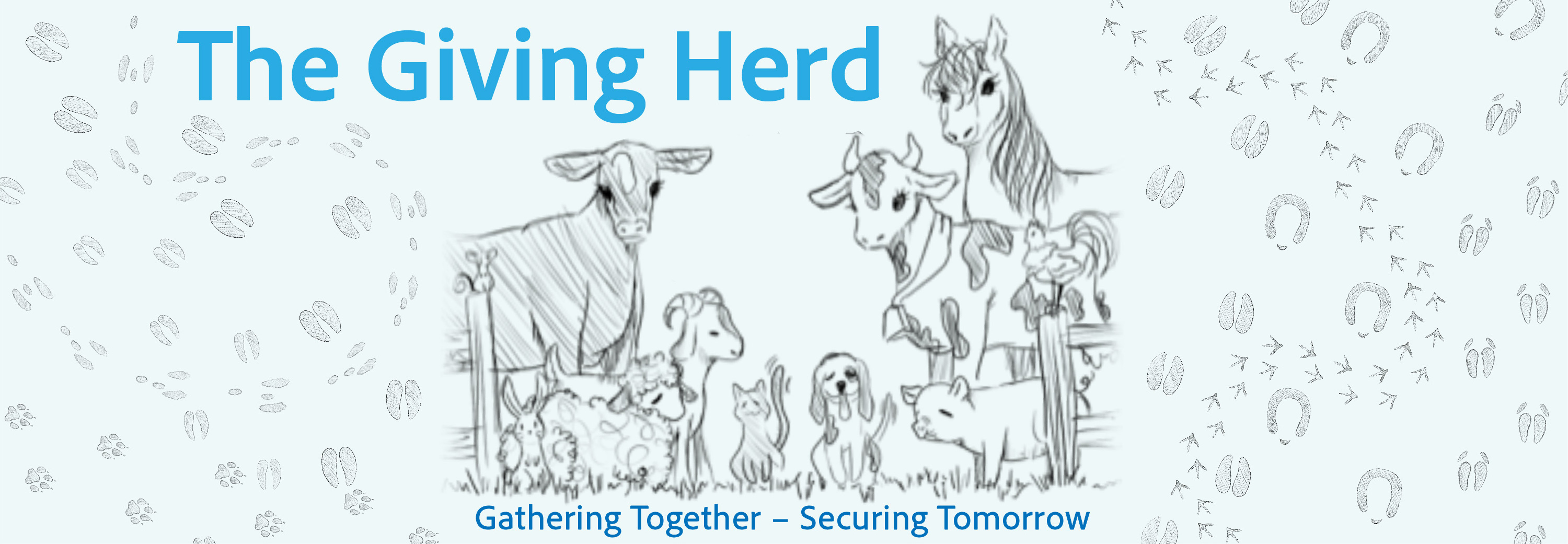
The August Edition of The Giving Herd, an ASAS Foundation Newsletter
Read more
-

Aug
19
A Life Bridging Animal and Human Science - Teresa A. Davis' Story

A Life Bridging Animal and Human Science - Teresa A. Davis' Story
Read more
-

Aug
14
Interpretive Summary: Effect of precision feeding standardized ileal digestible lysine and other amino acids to lactating sows compared to conventional feeding strategies in a commercial farm
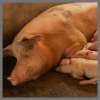
Sows are usually fed a single diet during lactation regardless of factors that affect nutrient requirements such as parity, milk production, and litter growth rate. Precision feeding through diet blending can be used to target an individual sow’s nutrient requirement and decrease diet costs compared to traditional feeding strategies.
Read more
-

Aug
14
Interpretive Summary: Effects of 25-hydroxycholecalciferol supplementation during gestation on sow performance, offspring development, and intestinal microbiota in sows and piglets
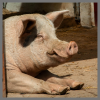
Vitamin D (VD) plays an important role in bone mineralization and animal reproductive performance. As a metabolite of VD in the liver, 25-hydroxycholecalciferol (25OHD3) is gradually becoming a substitute for VD3. However, reported effects of administering 25OHD3 to sow diet instead of VD3 are inconsistent.
Read more
-

Aug
14
Interpretive Summary: In vitro fermentation characteristics of acacia fiber using feline fecal inoculum

Acacia fiber is a soluble dietary fiber derived from the gum exudate of acacia trees. This fiber is commonly used in the pet food industry as a gelling and emulsifying agent, though its effects on feline gastrointestinal health are not well understood. The current experiment used a batch in vitro system and feline fecal inoculum to mimic the colonic bacterial fermentation process and assess the fermentation characteristics of an acacia fiber blend, inulin, pectin (positive control), and cellulose (negative control).
Read more
-

Aug
14
Interpretive Summary: Maternal supplementation of a Bacillus-based direct-fed microbials altered the cow prepartum plasma metabolome and the calf plasma metabolome before and after vaccination
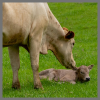
Direct-fed microbials (DFM), such as Bacillus spp., can enhance digestion and support the immune function of cattle. Nutritional management of beef cows during gestation and early lactation may enhance future offspring performance by multiple mechanisms, including modifying maternal and offspring blood metabolites.
Read more
-

Aug
14
Interpretive Summary: Relative bioavailability of 25-hydroxycholecalciferol vs. cholecalciferol and vitamin D3 requirements in White Pekin ducks from 15 to 42 d of age

Vitamin D3 (VD3) is essential for calcium and phosphorus absorption and bone development. However, endogenous synthesis of VD3 in poultry is insufficient to meet growth requirements, necessitating dietary supplementation. NRC (1994) recommended VD3 requirements for both starter and growing White Pekin ducks were 400 IU/kg. With the increasing growth rate of meat ducks, NRC recommendations may be inadequate for the growth of modern meat ducks.
Read more
-

Aug
14
Interpretive Summary: Unraveling factors influencing the variability and repeatability of greenhouse gases measured through an automated head chamber system in grazing cattle in commercial conditions
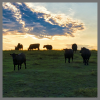
Accurate measurements of enteric methane emissions are becoming increasingly relevant to cattle production. This study evaluated how environmental, animal, and equipment factors influence enteric emissions and their repeatability over time when measured through automated head chamber system devices.
Read more
-

Aug
07
Interpretive Summary: ASAS-NANP SYMPOSIUM: Mathematical Modeling in Animal Nutrition: Training the Future Generation in Data and Predictive Analytics for Sustainable Development. A Summary of the 2023 Symposium
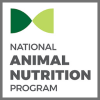
Mathematical modeling and data analytics are two critical components for achieving sustainability in livestock production. While scientific knowledge remains the most crucial step in model-building (Tedeschi, 2023), educating and training students and researchers in modeling techniques are essential first steps to developing the necessary discipline and skills for successful mathematical model development (Ellis et al., 2020; Tedeschi, 2019). Due to limited opportunities for students and researchers to understand the underlying principles of mathematical modeling, the Modeling Committee of the National Animal Nutrition Program (NANP; https://animalnutrition.org) was tasked with enhancing modeling skills for future generations in animal science programs by providing training venues for quantitative and qualitative modeling approaches to data and predictive analytics.
Read more
-

Aug
07
Interpretive Summary: Assessing the effects of supplementation with a Saccharomyces cerevisiae fermentation-derived postbiotic on methane production, ruminal fermentation, and nutrient utilization in beef cattle
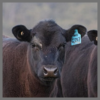
Rumen fluid from 6 cannulated Angus crossbred steers (experimental unit) was utilized to assess CH4 production and other ruminal fermentation parameters, such as gas production, pH, concentration of volatile fatty acids (VFA) and ammonia nitrogen, and in vitro organic matter digestibility under controlled laboratory conditions via the ex vivo model. To determine the effects of SCFP supplementation in vivo, rumen fluid from each steer was collected over a 24 h period to evaluate the dynamics of ruminal fermentation, and feed and fecal samples were collected to estimate the in vivo apparent total tract digestibility of nutrients.
Read more
 AugWashington Roundup – August 2025
AugWashington Roundup – August 2025 Congress left for August recess after passing the “Big, Beautiful Bill”, which addressed many of the major Farm Bill funding programs. However, due to the Byrd Rule in the Senate, many programs must still be reauthorized, or face expiration at the end of September. Chairman Thompson (R-PA) has dubbed the remaining work as “Farm Bill 2.0”. He estimates that Farm Bill 2.0 should be less controversial and able to garner more bipartisan support than the Big, Beautiful Bill.
Congress left for August recess after passing the “Big, Beautiful Bill”, which addressed many of the major Farm Bill funding programs. However, due to the Byrd Rule in the Senate, many programs must still be reauthorized, or face expiration at the end of September. Chairman Thompson (R-PA) has dubbed the remaining work as “Farm Bill 2.0”. He estimates that Farm Bill 2.0 should be less controversial and able to garner more bipartisan support than the Big, Beautiful Bill. AugInterpretive Summary: Space-Age Tools For Old-School Grazing Management
AugInterpretive Summary: Space-Age Tools For Old-School Grazing Management One of the oldest human-managed uses of the physical world is animal husbandry. This has always been a fascinating, complex combination of scientific understanding of natural resources and animals and the contextual application of that knowledge, which builds on itself in the doing.
One of the oldest human-managed uses of the physical world is animal husbandry. This has always been a fascinating, complex combination of scientific understanding of natural resources and animals and the contextual application of that knowledge, which builds on itself in the doing. AugInterpretive Summary: Emerging Technology for Quantifying Diet Composition of Grazing Animals
AugInterpretive Summary: Emerging Technology for Quantifying Diet Composition of Grazing Animals Determining what plants grazing animals are eating has been a persistent challenge for animal and rangeland scientists (Holechek et al. 1982). This challenge not only applies to important livestock species such as cattle, sheep, and horses but also wildlife – all of which often or always inhabit large extensive rangelands with complex plant communities.
Determining what plants grazing animals are eating has been a persistent challenge for animal and rangeland scientists (Holechek et al. 1982). This challenge not only applies to important livestock species such as cattle, sheep, and horses but also wildlife – all of which often or always inhabit large extensive rangelands with complex plant communities. AugInterpretive Summary: Cow Size: Implications for Grazing Rangelands and the Beef Industry
AugInterpretive Summary: Cow Size: Implications for Grazing Rangelands and the Beef Industry Beef cows have been getting larger over the past 4 to 5 decades which can create problems for many different segments of the beef industry (Scasta, et al. 2019). According to the United States Beef Improvement Federation and National Cattle Slaughter Summary, in 1975 the average U.S. beef cow weighed ~1,050 pounds and by 2009 weighed ~1,350 pounds, and today it is thought they weigh ~1,400 pounds but potentially stabilizing (Wiseman et al. 2018).
Beef cows have been getting larger over the past 4 to 5 decades which can create problems for many different segments of the beef industry (Scasta, et al. 2019). According to the United States Beef Improvement Federation and National Cattle Slaughter Summary, in 1975 the average U.S. beef cow weighed ~1,050 pounds and by 2009 weighed ~1,350 pounds, and today it is thought they weigh ~1,400 pounds but potentially stabilizing (Wiseman et al. 2018). AugInterpretive Summary: Assessing the Efficacy and the Conservation Benefit of Virtual Fence on Rugged and Remote Landscapes
AugInterpretive Summary: Assessing the Efficacy and the Conservation Benefit of Virtual Fence on Rugged and Remote Landscapes For producers and those outside agriculture, virtual fence provokes hope, novelty, and interest. But how does it work on rugged, mountainous terrain in remote areas?
For producers and those outside agriculture, virtual fence provokes hope, novelty, and interest. But how does it work on rugged, mountainous terrain in remote areas? AugInterpretive Summary: Impacts of heat stress on growth performance and its mitigation in small ruminants
AugInterpretive Summary: Impacts of heat stress on growth performance and its mitigation in small ruminants Small ruminants have been amongst the first farm animals to be domesticated by humans. Primarily, these animals are raised for meat, milk and skin ensuring global food security in addition to providing draught power and financial services. Small ruminants are highly valued for their versatility and excellent adaptability to varied geographical and climatic conditions as evident from their wide distribution pattern in Asian and African continents with rough climatic conditions.
Small ruminants have been amongst the first farm animals to be domesticated by humans. Primarily, these animals are raised for meat, milk and skin ensuring global food security in addition to providing draught power and financial services. Small ruminants are highly valued for their versatility and excellent adaptability to varied geographical and climatic conditions as evident from their wide distribution pattern in Asian and African continents with rough climatic conditions. AugInterpretive Summary: Impacts of stress on growth and reproductive development of beef heifers
AugInterpretive Summary: Impacts of stress on growth and reproductive development of beef heifers The success of cow-calf operations is fundamentally tied to the performance and management of beef females, as they are expected to maintain estrous cyclicity and produce one calf per cow annually. A combination of factors, including nutrition and management practices, affect reproductive success in cattle, and therefore overall fertility and herd performance.
The success of cow-calf operations is fundamentally tied to the performance and management of beef females, as they are expected to maintain estrous cyclicity and produce one calf per cow annually. A combination of factors, including nutrition and management practices, affect reproductive success in cattle, and therefore overall fertility and herd performance. AugInterpretive Summary: Charting a course on the effects of ocean and sea transportation stress on cattle and sheep body weight changes, behavior, and nutrient mobilization
AugInterpretive Summary: Charting a course on the effects of ocean and sea transportation stress on cattle and sheep body weight changes, behavior, and nutrient mobilization Transportation is a necessary part of ruminant livestock production, with most animals being transported at least once in their lifetime, if not more frequently. Livestock are transported for a variety of reasons, including growing and finishing, harvesting, acquiring new genetics, and show purposes. However, transportation can be a potential stressor for livestock that can impact skeletal muscle, growth, and meat quality (Dalmau et al., 2013; Deters and Hansen, 2022).
Transportation is a necessary part of ruminant livestock production, with most animals being transported at least once in their lifetime, if not more frequently. Livestock are transported for a variety of reasons, including growing and finishing, harvesting, acquiring new genetics, and show purposes. However, transportation can be a potential stressor for livestock that can impact skeletal muscle, growth, and meat quality (Dalmau et al., 2013; Deters and Hansen, 2022). AugInterpretive Summary: Factors contributing to differences in stress resilience and growth performance between Bos taurus and Bos indicus cattle
AugInterpretive Summary: Factors contributing to differences in stress resilience and growth performance between Bos taurus and Bos indicus cattle As the world population is projected to increase to 9.15 billion by 2050, demand for agricultural products is expected to increase 60% (Alexandratos and Bruinsma, 2012). Current cattle production practices will not meet increasing demand. The U.S. primarily produces Bos taurus cattle and ranks first in beef exports worldwide, accounting for 20% of the world supply (Colditz and Hine, 2016; Scheffler, 2022; USDA, 2024).
As the world population is projected to increase to 9.15 billion by 2050, demand for agricultural products is expected to increase 60% (Alexandratos and Bruinsma, 2012). Current cattle production practices will not meet increasing demand. The U.S. primarily produces Bos taurus cattle and ranks first in beef exports worldwide, accounting for 20% of the world supply (Colditz and Hine, 2016; Scheffler, 2022; USDA, 2024). AugInterpretive Summary: Plant tannin for grazing ruminant growth
AugInterpretive Summary: Plant tannin for grazing ruminant growth Tannins have long been used to preserve and tan leather. There are reports of tannin use dating back to the late Neolithic period (Falcão and Araujo, 2018), when aqueous extracts with plant parts were used to prevent the degradation of slaughtered animal skins, transforming them into leather.
Tannins have long been used to preserve and tan leather. There are reports of tannin use dating back to the late Neolithic period (Falcão and Araujo, 2018), when aqueous extracts with plant parts were used to prevent the degradation of slaughtered animal skins, transforming them into leather. AugThe Giving Herd - ASAS Foundation Newsletter - August 2025
AugThe Giving Herd - ASAS Foundation Newsletter - August 2025 The August Edition of The Giving Herd, an ASAS Foundation Newsletter
The August Edition of The Giving Herd, an ASAS Foundation Newsletter AugA Life Bridging Animal and Human Science - Teresa A. Davis' Story
AugA Life Bridging Animal and Human Science - Teresa A. Davis' Story A Life Bridging Animal and Human Science - Teresa A. Davis' Story
A Life Bridging Animal and Human Science - Teresa A. Davis' Story AugInterpretive Summary: Effect of precision feeding standardized ileal digestible lysine and other amino acids to lactating sows compared to conventional feeding strategies in a commercial farm
AugInterpretive Summary: Effect of precision feeding standardized ileal digestible lysine and other amino acids to lactating sows compared to conventional feeding strategies in a commercial farm Sows are usually fed a single diet during lactation regardless of factors that affect nutrient requirements such as parity, milk production, and litter growth rate. Precision feeding through diet blending can be used to target an individual sow’s nutrient requirement and decrease diet costs compared to traditional feeding strategies.
Sows are usually fed a single diet during lactation regardless of factors that affect nutrient requirements such as parity, milk production, and litter growth rate. Precision feeding through diet blending can be used to target an individual sow’s nutrient requirement and decrease diet costs compared to traditional feeding strategies. AugInterpretive Summary: Effects of 25-hydroxycholecalciferol supplementation during gestation on sow performance, offspring development, and intestinal microbiota in sows and piglets
AugInterpretive Summary: Effects of 25-hydroxycholecalciferol supplementation during gestation on sow performance, offspring development, and intestinal microbiota in sows and piglets Vitamin D (VD) plays an important role in bone mineralization and animal reproductive performance. As a metabolite of VD in the liver, 25-hydroxycholecalciferol (25OHD3) is gradually becoming a substitute for VD3. However, reported effects of administering 25OHD3 to sow diet instead of VD3 are inconsistent.
Vitamin D (VD) plays an important role in bone mineralization and animal reproductive performance. As a metabolite of VD in the liver, 25-hydroxycholecalciferol (25OHD3) is gradually becoming a substitute for VD3. However, reported effects of administering 25OHD3 to sow diet instead of VD3 are inconsistent. AugInterpretive Summary: In vitro fermentation characteristics of acacia fiber using feline fecal inoculum
AugInterpretive Summary: In vitro fermentation characteristics of acacia fiber using feline fecal inoculum Acacia fiber is a soluble dietary fiber derived from the gum exudate of acacia trees. This fiber is commonly used in the pet food industry as a gelling and emulsifying agent, though its effects on feline gastrointestinal health are not well understood. The current experiment used a batch in vitro system and feline fecal inoculum to mimic the colonic bacterial fermentation process and assess the fermentation characteristics of an acacia fiber blend, inulin, pectin (positive control), and cellulose (negative control).
Acacia fiber is a soluble dietary fiber derived from the gum exudate of acacia trees. This fiber is commonly used in the pet food industry as a gelling and emulsifying agent, though its effects on feline gastrointestinal health are not well understood. The current experiment used a batch in vitro system and feline fecal inoculum to mimic the colonic bacterial fermentation process and assess the fermentation characteristics of an acacia fiber blend, inulin, pectin (positive control), and cellulose (negative control). AugInterpretive Summary: Maternal supplementation of a Bacillus-based direct-fed microbials altered the cow prepartum plasma metabolome and the calf plasma metabolome before and after vaccination
AugInterpretive Summary: Maternal supplementation of a Bacillus-based direct-fed microbials altered the cow prepartum plasma metabolome and the calf plasma metabolome before and after vaccination Direct-fed microbials (DFM), such as Bacillus spp., can enhance digestion and support the immune function of cattle. Nutritional management of beef cows during gestation and early lactation may enhance future offspring performance by multiple mechanisms, including modifying maternal and offspring blood metabolites.
Direct-fed microbials (DFM), such as Bacillus spp., can enhance digestion and support the immune function of cattle. Nutritional management of beef cows during gestation and early lactation may enhance future offspring performance by multiple mechanisms, including modifying maternal and offspring blood metabolites. AugInterpretive Summary: Relative bioavailability of 25-hydroxycholecalciferol vs. cholecalciferol and vitamin D3 requirements in White Pekin ducks from 15 to 42 d of age
AugInterpretive Summary: Relative bioavailability of 25-hydroxycholecalciferol vs. cholecalciferol and vitamin D3 requirements in White Pekin ducks from 15 to 42 d of age Vitamin D3 (VD3) is essential for calcium and phosphorus absorption and bone development. However, endogenous synthesis of VD3 in poultry is insufficient to meet growth requirements, necessitating dietary supplementation. NRC (1994) recommended VD3 requirements for both starter and growing White Pekin ducks were 400 IU/kg. With the increasing growth rate of meat ducks, NRC recommendations may be inadequate for the growth of modern meat ducks.
Vitamin D3 (VD3) is essential for calcium and phosphorus absorption and bone development. However, endogenous synthesis of VD3 in poultry is insufficient to meet growth requirements, necessitating dietary supplementation. NRC (1994) recommended VD3 requirements for both starter and growing White Pekin ducks were 400 IU/kg. With the increasing growth rate of meat ducks, NRC recommendations may be inadequate for the growth of modern meat ducks. AugInterpretive Summary: Unraveling factors influencing the variability and repeatability of greenhouse gases measured through an automated head chamber system in grazing cattle in commercial conditions
AugInterpretive Summary: Unraveling factors influencing the variability and repeatability of greenhouse gases measured through an automated head chamber system in grazing cattle in commercial conditions Accurate measurements of enteric methane emissions are becoming increasingly relevant to cattle production. This study evaluated how environmental, animal, and equipment factors influence enteric emissions and their repeatability over time when measured through automated head chamber system devices.
Accurate measurements of enteric methane emissions are becoming increasingly relevant to cattle production. This study evaluated how environmental, animal, and equipment factors influence enteric emissions and their repeatability over time when measured through automated head chamber system devices. AugInterpretive Summary: ASAS-NANP SYMPOSIUM: Mathematical Modeling in Animal Nutrition: Training the Future Generation in Data and Predictive Analytics for Sustainable Development. A Summary of the 2023 Symposium
AugInterpretive Summary: ASAS-NANP SYMPOSIUM: Mathematical Modeling in Animal Nutrition: Training the Future Generation in Data and Predictive Analytics for Sustainable Development. A Summary of the 2023 Symposium Mathematical modeling and data analytics are two critical components for achieving sustainability in livestock production. While scientific knowledge remains the most crucial step in model-building (Tedeschi, 2023), educating and training students and researchers in modeling techniques are essential first steps to developing the necessary discipline and skills for successful mathematical model development (Ellis et al., 2020; Tedeschi, 2019). Due to limited opportunities for students and researchers to understand the underlying principles of mathematical modeling, the Modeling Committee of the National Animal Nutrition Program (NANP; https://animalnutrition.org) was tasked with enhancing modeling skills for future generations in animal science programs by providing training venues for quantitative and qualitative modeling approaches to data and predictive analytics.
Mathematical modeling and data analytics are two critical components for achieving sustainability in livestock production. While scientific knowledge remains the most crucial step in model-building (Tedeschi, 2023), educating and training students and researchers in modeling techniques are essential first steps to developing the necessary discipline and skills for successful mathematical model development (Ellis et al., 2020; Tedeschi, 2019). Due to limited opportunities for students and researchers to understand the underlying principles of mathematical modeling, the Modeling Committee of the National Animal Nutrition Program (NANP; https://animalnutrition.org) was tasked with enhancing modeling skills for future generations in animal science programs by providing training venues for quantitative and qualitative modeling approaches to data and predictive analytics. AugInterpretive Summary: Assessing the effects of supplementation with a Saccharomyces cerevisiae fermentation-derived postbiotic on methane production, ruminal fermentation, and nutrient utilization in beef cattle
AugInterpretive Summary: Assessing the effects of supplementation with a Saccharomyces cerevisiae fermentation-derived postbiotic on methane production, ruminal fermentation, and nutrient utilization in beef cattle Rumen fluid from 6 cannulated Angus crossbred steers (experimental unit) was utilized to assess CH4 production and other ruminal fermentation parameters, such as gas production, pH, concentration of volatile fatty acids (VFA) and ammonia nitrogen, and in vitro organic matter digestibility under controlled laboratory conditions via the ex vivo model. To determine the effects of SCFP supplementation in vivo, rumen fluid from each steer was collected over a 24 h period to evaluate the dynamics of ruminal fermentation, and feed and fecal samples were collected to estimate the in vivo apparent total tract digestibility of nutrients.
Rumen fluid from 6 cannulated Angus crossbred steers (experimental unit) was utilized to assess CH4 production and other ruminal fermentation parameters, such as gas production, pH, concentration of volatile fatty acids (VFA) and ammonia nitrogen, and in vitro organic matter digestibility under controlled laboratory conditions via the ex vivo model. To determine the effects of SCFP supplementation in vivo, rumen fluid from each steer was collected over a 24 h period to evaluate the dynamics of ruminal fermentation, and feed and fecal samples were collected to estimate the in vivo apparent total tract digestibility of nutrients.



